By Elizabeth Hoffman, Ph.D., professor of economics; former executive vice president and provost; and former dean, College of Liberal Arts and Sciences, Iowa State University
I started at Iowa State University as the dean of the College of Liberal Arts and Sciences on July 1, 1993. As Sharon Rodine outlined in her March 2022 Voices article, the Carrie Chapman Center for Women and Politics had just been launched and the decision to renovate Old Botany and rename it Carrie Chapman Catt Hall had already been made and approved by the Iowa Board of Regents.
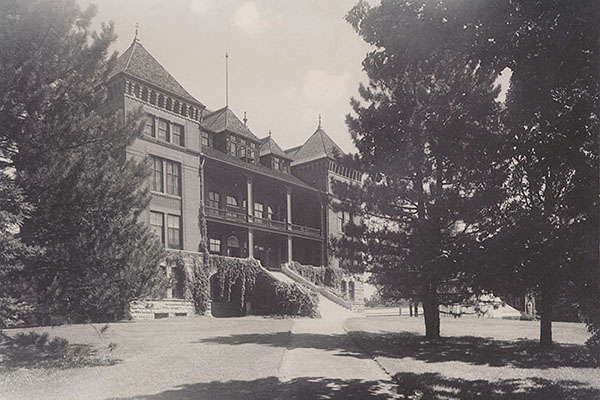
The Board of Regents had approved $5 million for the renovation, most of which was to come from the Iowa State University Foundation and presidential renovation funds. As the new LAS dean, I was charged with raising $1 million of that total. As anyone who has ever raised private funds knows, raising money to renovate an old building already named for a dead woman is not an easy task.
In the fall of 1993, the new center had some initial gifts to launch it, but a major fundraising development plan needed to be implemented. Moreover, the center had a staff member who ran its day-to-day activities, but did not yet have a permanent academic director to help with fundraising. Fortunately, I was able to put together a team of creative, resourceful and energetic women to help develop fundraising ideas and promotional events. From the beginning, the building renovation and the center were promoted as a total package designed to honor one of the university’s most nationally and internationally renowned graduates, Carrie Chapman Catt.
Jane Cox, now professor emerita of music and theatre, did and still does know more about Catt than anyone else I know. The result of her extensive research was her original one-woman play about Catt’s life and times titled “The Yellow Rose of Suffrage” — the yellow rose being the symbol of the women’s suffrage movement. Through the play, Professor Cox brought Catt to life, and we took the play on the road as part of our fundraising effort.
The initial date projected for the dedication of the renovated building was August 1995, selected to coincide with the 75th anniversary of the passage of the 19th Amendment granting women citizens the right to vote. I asked local arts impresario, Carole Horowitz, to serve as the LAS public relations consultant to help coordinate the planning and promotion of the LAS events leading up to the building dedication and anniversary, which would celebrate the completion of this special capital campaign project.
Kay Kirkman, ISU Foundation program officer for LAS, was the energetic catalyst for the fundraising ideas, having worked with the concept for the building renovation and center from the beginning. One of her ideas was the creation of a large brick plaza that would surround the building’s dramatic front steps. To be called the Plaza of Heroines, bricks for the plaza would be sold to honor or in memory of women, their names to be engraved on the bricks and their stories to be featured on a kiosk inside the building. It was an immediate success, providing an opportunity for thousands of people to be part of a grassroots fundraising effort for the building renovation and new center.

Anne Johnson, LAS alumni director, rounded out our “fab five” team of women to build publicity, organize special events and implement our fundraising plan. Starting in earnest in the fall of 1994, Johnson and Kirkman arranged for us to meet with groups of women alumnae and prospective donors around Iowa, the Midwest and across the country. There was much excitement; the renovation of the building on central campus, with the new center inside, would be the first time that the university had honored a female graduate in a major, significant way. At the time, almost all of the buildings on campus were named for men, very few of whom matched the national and international prominence and achievements of Carrie Chapman Catt.
Our efforts focused specifically on engaging women and new donors. At each event, I would talk about opportunities for women to become engaged with LAS and Iowa State. Sometimes we brought other deans to talk about their colleges. Professor Cox would present an excerpt from the “The Yellow Rose of Suffrage,” always speaking as Carrie Chapman Catt, herself, dressed in appropriate costume of her time. We would end with a fundraising appeal from Kirkman. Johnson organized the events and Horowitz was a principal cheerleader. We were a powerful, energized team.
We created a wide array of giving opportunities: naming rooms, offices, program spaces, the front steps, the front porch and balcony, and as many bricks or granite pavers as anyone wished to purchase in the Plaza of Heroines to honor someone special to them. To date, more than 4,000 women are honored on the plaza with a brick or paver. So many people are deeply and personally invested in the plaza, not only as an impressive entrance to the building, but also as a living tribute to the women who have influenced and inspired them. The plaza has become a destination for visitors on campus who come to find the brick for their mother or grandmother and to read their stories and the stories of the thousands of other women whose lives have been commemorated in the plaza.
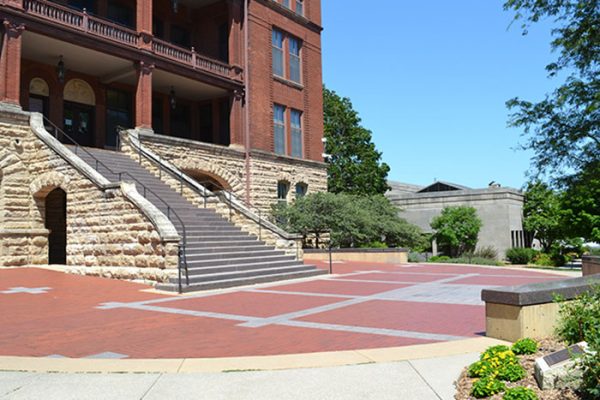
My husband, Brian Binger, and I started the Catt Center’s Legacy of Heroines Scholarship Program in 1995 with a $100,000 pledge, inviting others to fund annual or endowed scholarships and launching a major new student support initiative. Today, the program is open to both female and male students who work on the many learning and leadership opportunities available through the center. Women and men who identified with Carrie Chapman Catt’s life and work invested in Iowa State and this project in her name. In fact, this particular fundraising effort initiated what is now the highly successful Women in Philanthropy program at the Iowa State University Foundation.
In April 1995, Kirkman worked with the Veishea planning committee to make sure Carrie Chapman Catt’s story, the upcoming dedication of Catt Hall and the new center were a central focus of the Veishea parade and festivities. By late spring, our attention was focused on August 26, 1995, the 75th anniversary of the ratification of the 19th Amendment, which gave all women citizens the right to vote — Catt’s crowning achievement. We arranged to represent Iowa State University and its famous women’s suffrage leader in Washington, DC, on that weekend as the culmination of our Catt Hall/Center fundraising tour. Alumni from the DC area were invited to a meeting and a performance of the “The Yellow Rose of Suffrage” by Professor Cox at the Kennedy Center for the Performing Arts. Horowitz and I also participated in the 75th anniversary suffrage parade, dressed in suffrage white. The weekend was a smash hit.
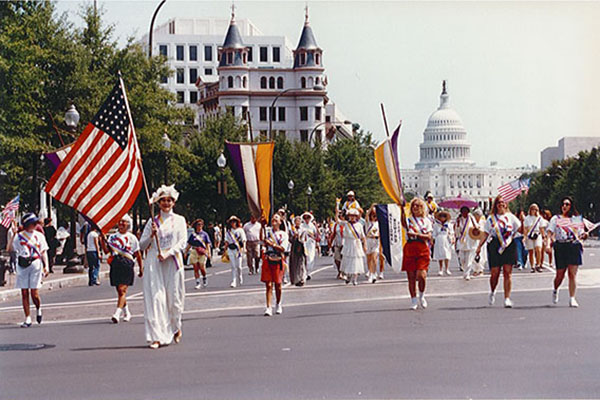
The next major event was the grand re-opening of Catt Hall, now a beautifully renovated Queen Anne revival building, with the dedication re-scheduled for October 6, 1995. To add to the campus festivities, Kirkman and Horowitz organized a Chautauqua on central campus in front of Catt Hall for the week preceding the dedication. Faculty, students, staff and alumni lined up to present research talks, sketches or discussions, or just to participate, all in the spirit of the great 19th century Chautauqua movement. The weather was beautiful all week, adding to the success of the event.
On October 6, the dedication festivities started with a lunch in the Memorial Union for 1,000 guests, mostly women. More people showed up than had signed up. We opened all the rooms from the Great Hall to the Sun Room and Oak Room to accommodate the crowd. Every woman of importance in Iowa was there, including Mary Louise Smith, the first woman to chair the Republican National Committee, and Lt. Gov. Joy Corning.
The day dawned a bit gray, but with no rain. The dedication ceremony and grand opening were to start after lunch. We monitored the weather during lunch and finally decided to go ahead with our outdoor event as planned. After the meal, as we started to walk from the Memorial Union to the Plaza of Heroines, it began to drizzle. By the time we got to Catt Hall, it was still drizzling. All the umbrellas went up almost in unison. We were able to finish the event, including a short “The Yellow Rose of Suffrage” presentation, flanked by suffragists all in white.

During the program, I announced our pledge to kick off the Legacy of Heroines scholarship fund. Several donors stepped up right away to fund scholarships. With the dedication of the building, its academic center inside, and the Plaza of Heroines surrounding the prominent front façade, a stunning new jewel had joined the other grand buildings that encircled central campus. The newly restored 1890s building aptly reflected the period when Carrie Chapman Catt began her leadership role with the National American Woman Suffrage Association.
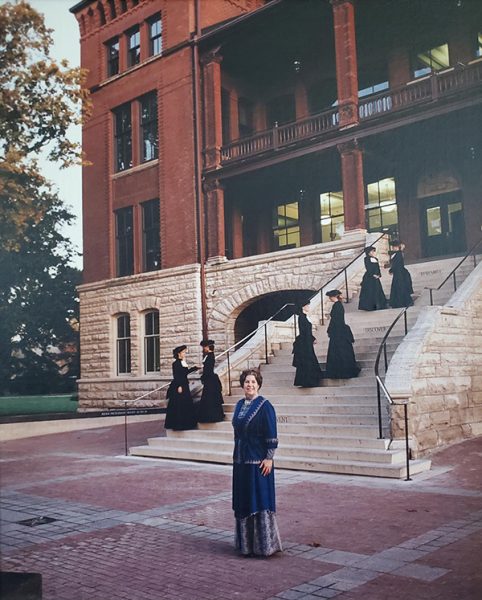
To launch the Mary Louise Smith Chair in Women and Politics, Kirkman organized a gala fundraising dinner in Des Moines on April 16, 1996, featuring former President George H.W. Bush as the keynote speaker. In my program remarks, I noted that we were able to establish the chair with generous bipartisan support from people who recognized Smith’s contributions to American politics. Smith was a devoted University of Iowa alumna. John Axel, co-chair of the Carrie Chapman Catt Campaign for the ISU Foundation, asked her to allow a program to be named in her honor at Iowa State University’s new Catt Center; Smith agreed, largely because of her admiration for Carrie Chapman Catt.
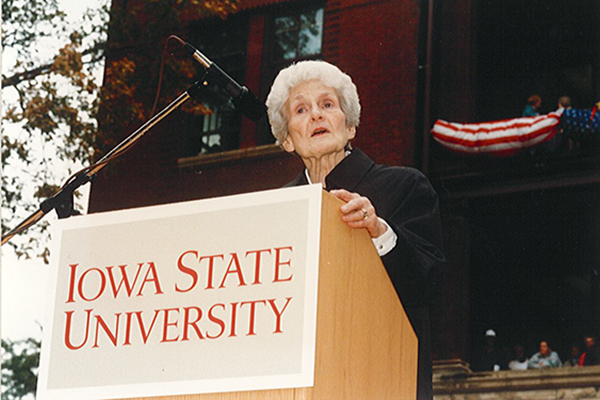
The former president was the first of many national leaders who have visited Iowa over the past 30 years as part the Catt Center’s programs. In the September issue of Voices, Dianne Bystrom, director emerita of the Carrie Chapman Catt Center for Women and Politics, will share the story of the center’s development from 1996 to 2018 into a nationally recognized program offering student leadership, civic engagement, and research opportunities and initiatives.
In this 30th anniversary year, I have reflected often on what Carrie Lane Chapman Catt would be fighting for today. I know she would be continuing her life’s work fighting for women’s rights everywhere in the world and for world peace. But I also think she would be marching and fighting for civil rights for all, as she fought for voting rights for all at a time when it would have been so easy to give in to the voices screaming to limit those rights, echoes of the same voices we are hearing today.